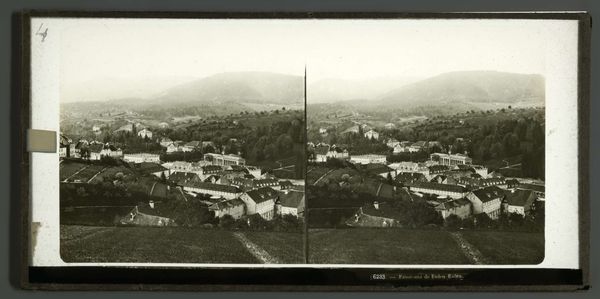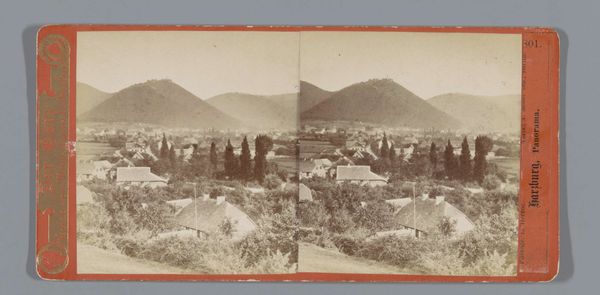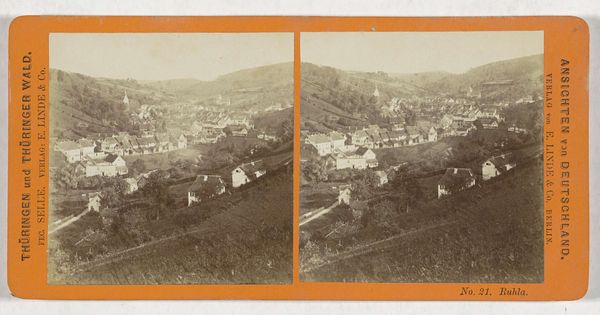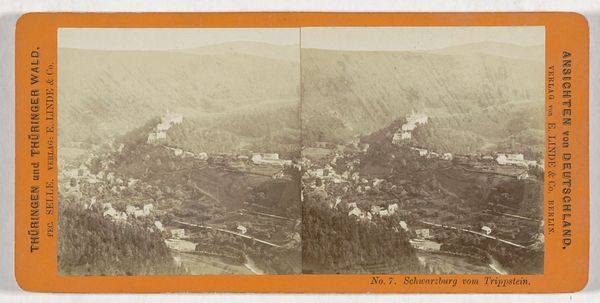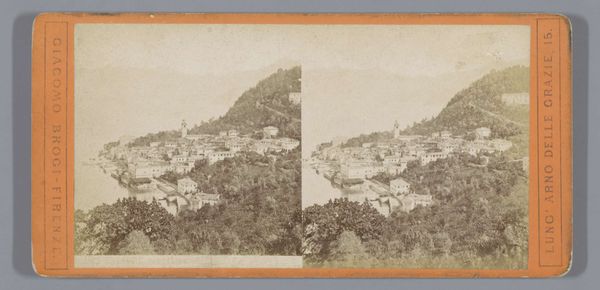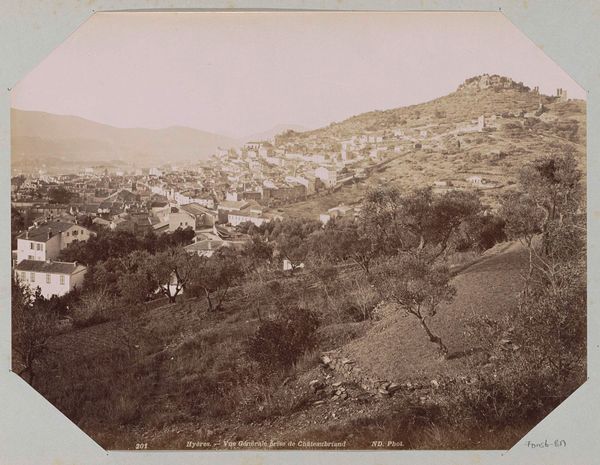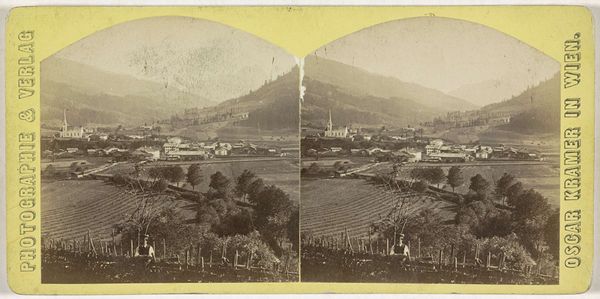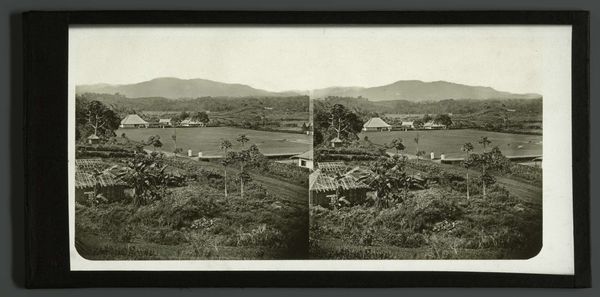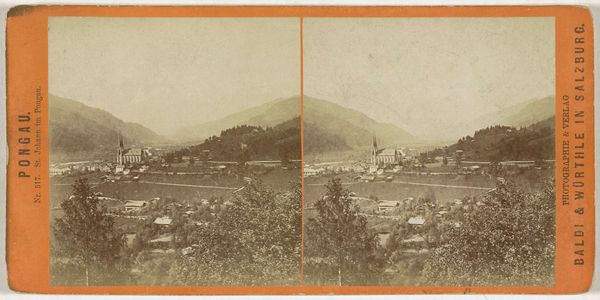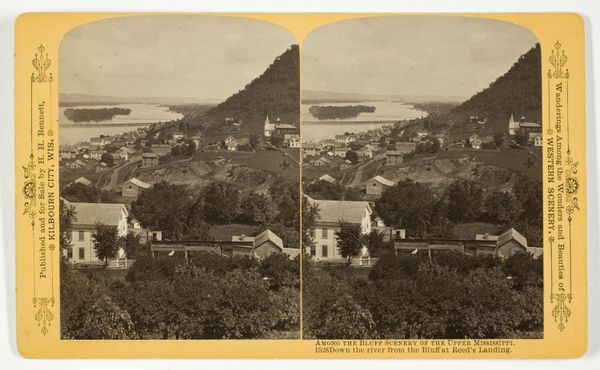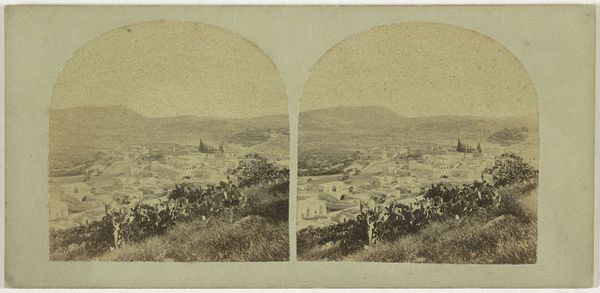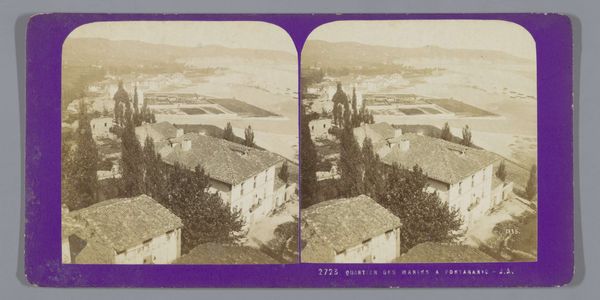
Gezicht op La Seyne-sur-Mer, gezien vanaf Toulon, Frankrijk 1860 - 1870
0:00
0:00
Dimensions: height 83 mm, width 170 mm
Copyright: Rijks Museum: Open Domain
Curator: Here we have a photograph from Ferrier Père-Fils et Soulier, titled “Gezicht op La Seyne-sur-Mer, gezien vanaf Toulon, Frankrijk,” dating roughly from 1860 to 1870. Editor: It feels rather stark, almost skeletal in its composition. The arrangement of light and shadow generates this peculiar sensation, a somewhat somber meditation on urban form, don't you think? Curator: Undoubtedly. The restrained palette facilitates an acute reading of form and spatial relationships. Observe how the placement of the buildings creates lines drawing the eye towards the water, offering both a foreground and horizon point. The formal design emphasizes this interplay. Editor: But also, the laborious, highly technical photographic processes in use during the mid-19th century would inevitably have an impact on the final image, no? There’s something in that technical mediation – the long exposures, the chemistry, the printing itself - that speaks volumes about how representations of this era were actually produced. Think about the workers and the labour that goes into making this reproducible scene available. Curator: An intriguing interpretation, but does focusing too much on the materiality overshadow the structured design? This work emphasizes vertical and horizontal balance to guide perception, suggesting a dialogue about classical ideals within photographic media. Editor: I wouldn’t suggest it obscures structure; it complicates it. Instead of thinking of this image simply as a record of reality, let's engage with how the limitations, skill, and tools transform it into art, or an artisanal piece of labour to depict reality as the operator's eye perceived it. The tones themselves denote hours of work at play here, from their acquisition, to setting it into view in such a rigid frame to allow eyes to be placed on La Seyne-sur-Mer. Curator: Perhaps our differences reflect differing theoretical frameworks? Your reading focuses on historical and industrial processes; my methodology favors textual components through which meaning is constituted. It still stands that a very deliberate articulation is in process. Editor: An articulation borne of human processes. A labour so visible that we must reflect upon it now, for we shall reflect differently tomorrow.
Comments
No comments
Be the first to comment and join the conversation on the ultimate creative platform.

